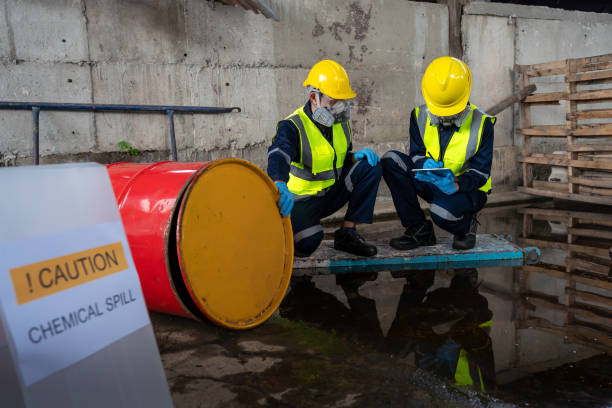Oil spills are a major concern for marine and coastal environments. In a maritime hub like Dubai, quick and effective oil spill response is essential. One of the most used methods in spill response is the application of OSD Oil Spill Dispersant. These chemical agents help reduce the environmental impact of oil slicks by breaking the oil into smaller droplets.
This blog explains what OSD dispersants are, their types, how they are used in Dubai, and the safety and environmental considerations surrounding them.
What Are OSD Oil Spill Dispersants?
Oil Spill Dispersants (OSD) are chemical formulations used to break down oil slicks on water surfaces. They contain surfactants and solvents that interact with oil, making it easier for natural processes to degrade it.
How Do Dispersants Work?
When dispersants are sprayed on oil slicks, they reduce the surface tension between oil and water. This causes the oil to disperse into tiny droplets. These droplets then mix into the water column and are degraded by naturally occurring bacteria.
Why Are Dispersants Important in Dubai?
Dubai’s coastlines and shipping activities are vulnerable to accidental oil discharges. With increasing marine traffic and offshore oil operations, the city must maintain effective spill response mechanisms. Dispersants offer a rapid solution in open sea conditions where other cleanup methods may fail.
Types of OSD Oil Spill Dispersants
Dispersants are not one-size-fits-all. They come in different types, each suited for specific conditions and oil types.
Type I Dispersants
Type I dispersants are designed for use on fresh oil slicks. They are sprayed directly onto the oil surface and rely on strong wave action to help disperse the oil.
Type II Dispersants
These are diluted with water and applied to oil using special nozzles. They work best in low-energy conditions, such as harbors or calm seas. Type II dispersants are typically less toxic than Type I.
Type III Dispersants
These are more modern and efficient. They are applied undiluted and work well in both high and low energy environments. Type III dispersants are commonly used in offshore oil spill responses, including operations in Dubai.
Usage of OSD Dispersants in Dubai
Dubai follows strict environmental protocols for oil spill management. Dispersants are used only when other methods, such as mechanical recovery, are not feasible.
Application Techniques
In Dubai, dispersants can be applied using:
- Aircraft for wide-area coverage.
- Vessels equipped with spray booms.
- Hand-held sprayers in small-scale incidents.
The method depends on the spill size, location, and environmental conditions.
Response Planning and Regulation
Dubai’s maritime authorities have detailed oil spill contingency plans. These include pre-approved dispersants listed under international safety standards. Any use of dispersants requires evaluation of the spill situation and potential impact on marine life.
Safety and Environmental Considerations
While dispersants help reduce shoreline contamination, their use comes with safety and ecological concerns.
Human and Marine Safety
Dispersants can affect marine organisms, especially if used in shallow or enclosed waters. Dubai authorities assess toxicity levels before deployment. They ensure that dispersants used are safe for responders and marine life.
Environmental Impact Assessment
Before any operation, a net environmental benefit analysis (NEBA) is conducted. This determines if using dispersants is better than allowing the oil to reach shore. In Dubai, such evaluations follow regional and international environmental standards.
Disposal and Residue Management
Although dispersants do not leave solid residues, monitoring is necessary. Authorities may conduct water quality tests to track dispersed oil components. Regular training ensures that responders follow safety procedures and use appropriate protective gear.
Challenges and Future Outlook
As Dubai continues to expand its coastal infrastructure, the risk of oil spills may increase. Climate conditions, water salinity, and oil types all affect dispersant efficiency. Therefore, ongoing research and regional collaboration are key.
Innovations in Dispersant Technology
Scientists are exploring bio-based and less toxic dispersants. These could offer effective alternatives with reduced environmental impact. Dubai’s marine safety programs often adopt new technologies as they become viable.
International Cooperation
Dubai participates in international marine pollution agreements. These collaborations help in sharing knowledge, response equipment, and technical expertise.
Conclusion
OSD oil spill dispersants play a vital role in protecting Dubai’s marine environment. They offer a fast and effective solution to oil spills when used properly. With proper regulation, safety checks, and trained response teams, Dubai ensures that dispersants are used responsibly and effectively. As technology improves, we can expect safer and more efficient spill response tools in the future.
